Text
How Germany's Famous Autobahns Came To Be
The idea for the construction of the autobahn was first conceived in the mid-1920s during the days of the Weimar Republic, but the construction was slow, and most projected sections did not progress much beyond the planning stage due to economic problems and a lack of political support.
One project was the private initiative HaFraBa which planned a "car-only road" crossing Germany from Hamburg in the north via central Frankfurt to Switzerland. Parts of the HaFraBa were completed in the late 1930s and early 1940s, but construction eventually was halted by World War II. The first public road of this kind was completed in 1932 between Cologne and Bonn and opened by Konrad Adenauer on 6 August 1932.
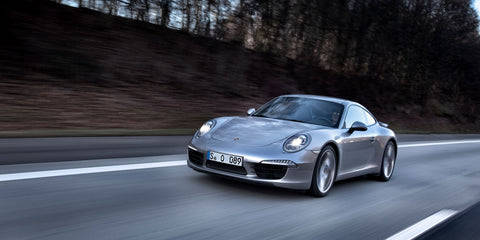
Today, that road is the Bundesautobahn 555. This road was not yet called Autobahn and lacked a centre median like modern motorways, but instead was termed a “Kraftfahrstraße” ("motor vehicle road") with two lanes each direction without intersections, pedestrians, bicycles, or animal-powered transportation.
Just days after the 1933 Nazi takeover, Adolf Hitler enthusiastically embraced an ambitious autobahn construction project, appointing Fritz Todt, the Inspector General of German Road Construction, to lead it.
By 1936, 130,000 workers were directly employed in construction, as well as an additional 270,000 in the supply chain for construction equipment, steel, concrete, signage, maintenance equipment, etc. In rural areas, new camps to house the workers were built near construction sites. The job creation program aspect was not especially important because full employment was almost reached by 1936.
Contrary to popular belief the autobahns were not primarily intended as major infrastructure improvement of special value to the military as often stated. Their military value was limited as all major military transports in Germany were done by train to save fuel. The propaganda ministry turned the construction of the autobahns into a major media event that attracted international attention.

The autobahns formed the first limited-access, high-speed road network in the world, with the first section from Frankfurt to Darmstadt opening in 1935. This straight section was used for high-speed record attempts by the Grand Prix racing teams of Mercedes-Benz and Auto Union until a fatal accident involving popular German race driver Bernd Rosemeyer in early 1938. The world record of 432 kilometres per hour (268 mph) set by Rudolf Caracciola on this stretch just prior to the accident remains one of the highest speeds ever achieved on a public motorway.
A similar intent in the 1930s existed for a ten-kilometre stretch of what is today Bundesautobahn 9 just south of Dessau—called the Dessauer Rennstrecke—had bridges with no piers, meant for land speed record cars like the Mercedes-Benz T80 to have made a record attempt in January 1940, abandoned due to the outbreak of World War II in Europe four months earlier.
During World War II, the median strips of some autobahns were paved over to allow their conversion into auxiliary airstrips. Aircraft were either stashed in numerous tunnels or camouflaged in nearby woods. However, for the most part during the war, the autobahns were not militarily significant.
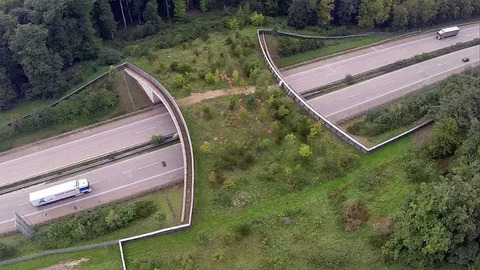
Motor vehicles, such as trucks, could not carry goods or troops as quickly or in as much bulk and in the same numbers as trains could, and the autobahns could not be used by tanks as their weight and caterpillar tracks damaged the road surface. The general shortage of gasoline in Germany during much of the war, as well as the low number of trucks and motor vehicles needed for direct support of military operations, further decreased the autobahn's significance.
As a result, most military and economic freight was carried by rail. After the war, numerous sections of the autobahns were in bad shape, severely damaged by heavy Allied bombing and military demolition. Furthermore, thousands of kilometres of autobahns remained unfinished, their construction brought to a halt by 1943 due to the increasing demands of the war effort.
In West Germany, most existing autobahns were repaired soon after the war. During the 1950s, the West German government restarted the construction program. It invested in new sections and in improvements to older ones. Finishing the incomplete sections took longer, with some stretches opened to traffic by the 1980s. Some sections cut by the Iron Curtain in 1945 were only completed after German reunification in 1990. Others were never completed, as more advantageous routes were found. Some of these incomplete sections to this very day stretch across the landscape forming a unique type of modern ruin, often easily visible on satellite photographs.

The autobahns of East Germany were neglected in comparison to those in West Germany after 1945. East German autobahns were used primarily for GDR military traffic and for state-owned farming or manufacturing vehicles. The speed limit on the GDR autobahns was 100 km/h; however, lower speed limits were frequently encountered due to poor or quickly changing road conditions. The speed limits on the GDR autobahns were rigorously enforced by the Volkspolizei, whose patrol cars were frequently found hiding under camouflage tarpaulins waiting for speeders.
1 note
·
View note
Text

Want to buy an LS3 engine shirt online? Shop high-quality unique Ls Engine T-Shirts designed and sold by Tool and Dye Designs. This shirt features a detailed graphic of the iconic LS3 engine, known for its performance and muscle. Perfect for gearheads and car enthusiasts, it's a must-have for anyone who appreciates the roar of a powerful engine. Show your love for high-performance engines with this stylish shirt featuring a detailed LS3 engine and get yours today and rev up your wardrobe with a touch of horsepower! For more details at www.toolanddyedesigns.com
0 notes
Text
Are you looking for an M3 ugly Christmas sweater online? Explore a wide collection of Christmas sweaters from the Tool and Dye Designs store. At Tool and Dye Designs featuring a mishmash of colorful, quirky, and comical holiday-themed designs, this sweater is the perfect attire for spreading cheer and laughter during the holiday season.
0 notes
Text
0 notes
Text
Coilover suspension: what is it and what are the benefits?
Coilover suspension: what is it and what are the benefits?
Track racing is all about maximizing performance and speed, and having a properly set up suspension system can make a significant difference in achieving those goals. One of the most popular suspension setups for track racing is the coilover suspension system. In this blog post, we’ll discuss what a coilover suspension is, the benefits of using one for track racing, and how to properly set it up for optimal performance.
What is a coilover suspension?
A coilover suspension is a type of suspension system that combines a coil spring and a shock absorber into one unit. The term “coilover” is derived from the words “coil spring” and “over shock”. The spring sits on top of the shock absorber and is held in place by a threaded collar, which allows for adjustable ride height.
Benefits of using a coilover suspension for track racing
One of the main benefits of using a coilover suspension for track racing is its adjustability. The threaded collar on the shock absorber allows for fine-tuning of the suspension to suit the specific needs of the track and the driver. This adjustability allows for changes in ride height, compression and rebound damping, and spring rates.
Another benefit of using a coilover suspension is its weight savings. Coilovers are typically lighter than traditional shock and spring setups because they eliminate the need for separate springs and shocks. This weight savings can improve the car’s handling and reduce unsprung weight, which in turn improves acceleration, braking, and cornering.
Setting up a coilover suspension for track racing
Properly setting up a coilover suspen
sion for track racing can be a complex process, but following these steps can help ensure optimal performance:
Determine your goals: Before making any adjustments to your coilover suspension, it’s important to determine your goals for track racing. Are you looking to improve lap times, reduce understeer or oversteer, or improve overall handling? Understanding your goals will help you make informed adjustments to the suspension.
2.Adjust ride height: Adjusting ride height is the first step in setting up a coilover suspension. Lowering the car’s center of gravity can improve handling, but it’s important not to lower the car too much, as it can result in ground clearance issues.
3.Adjust dampening: Compression and rebound dampening are two settings that can be adjusted on a coilover suspension. Compression damping controls the rate at which the suspension compresses, while rebound damping controls the rate at which the suspension rebounds. Adjusting these settings can help improve handling and reduce body roll.
4.Adjust spring rates: Spring rates determine how stiff the suspension is. Stiffer springs can improve handling and reduce body roll, but they can also result in a harsh ride. Softer springs can provide a more comfortable ride, but can also result in increased body roll.
5.Test and adjust: After making adjustments to your coilover suspension, it’s important to test the car on the track and make any necessary adjustments. It may take several iterations of adjusting and testing before you achieve the desired performance.
Conclusion
Coilover suspensions are a popular choice for track racers because of their adjustability and weight savings. Setting up a coilover suspension for track racing can be a complex process, but following the steps outlined in this blog post can help ensure optimal performance. Remember to take your time, test and adjust, and always prioritize safety on the track.
What are some of the best brands?
KW Suspension: KW Suspension is a well-respected suspension brand that offers a wide range of coilover kits for various makes and models. Their products are known for their high-quality construction and excellent adjustability.
2.Bilstein: Bilstein is another popular brand in the suspension world, known for their high-performance shock absorbers and coilover kits. They offer a range of kits for various applications, including track racing.
3.HKS: HKS is a Japanese company that has been producing high-performance automotive parts since the 1970s. They offer a range of coilover kits for various makes and models, including some specifically designed for track use.
4.Ohlins: Ohlins is a Swedish company that produces some of the highest quality suspension components in the world. They offer a range of coilover kits for track racing, with their products being used by some of the top race teams in various motorsports.
5.Tein: Tein is a Japanese company that produces high-performance suspension components for a range of applications, including track racing. Their coilover kits are known for their adjustability and durability.
6.It’s important to note that the best coilover for track racing will vary depending on the specific make and model of your car, as well as your specific goals and needs. It’s always best to do thorough research and consult with a professional to determine which coilover kit is best for your application.
0 notes
Text
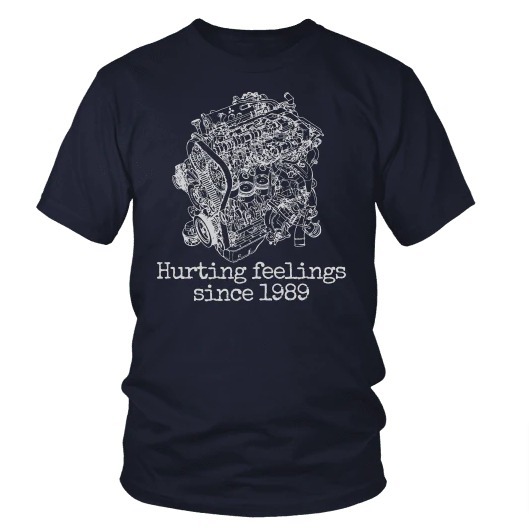
Want to buy an LS3 engine shirt online? Shop high-quality unique Ls Engine T-Shirts designed and sold by Tool and Dye Designs. This shirt features a detailed graphic of the iconic LS3 engine, known for its performance and muscle. Perfect for gearheads and car enthusiasts, it's a must-have for anyone who appreciates the roar of a powerful engine. Show your love for high-performance engines with this stylish shirt featuring a detailed LS3 engine and get yours today and rev up your wardrobe with a touch of horsepower! For more details at www.toolanddyedesigns.com
0 notes
Text
Are you looking for an M3 ugly Christmas sweater online? Explore a wide collection of Christmas sweaters from the Tool and Dye Designs store. At Tool and Dye Designs featuring a mishmash of colorful, quirky, and comical holiday-themed designs, this sweater is the perfect attire for spreading cheer and laughter during the holiday season.
0 notes
Text
0 notes
Text
The Prides Of Japan
It may be tiny and it rarely hosts major circuit championships these days, but Japan's Tsukuba is one of the most recognised circuits in Japan thanks being immortalised in countless video games. Known for being the home of time attack, Tsukuba is in fact these days two courses which enjoy year round popularity.
Tsukuba is one of the few Japanese circuits located in a metropolitan area, close to Tokyo, which has likely been key to its success and longevity. While one of the shortest tracks in the country, it has a seemingly endless stream of car enthusiasts on its doorstep, all keen for somewhere to show off their machinery.
The track was conceived in 1966, though it took several years to be ready for racing, finally opening in June 1970. The 1.271-mile course is U shaped, folding back on itself through a variety of hairpins and medium speed bends, with a final (seemingly never-ending) fast curve leading back to the start/finish. It is also billiard table smooth. Initially, the course had an even shorter variant, which cut out the final hairpin but this fell out of use in 1990 when a new chicane was added at the same spot for use by motorcycle racers only.
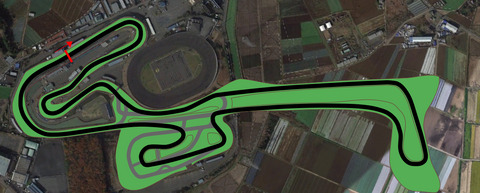
In its heyday the circuit hosted rounds of the All-Japan F3 Championship as well as the Japanese Touring Car series, both hugely popular events. Both series eventually moved on elsewhere, but on two wheels, it continues to host the All Japan Road Race Championship, better known these days as a heavily manufacturer-backed superbike series.
It was the sport of time attack which ensured Tsukuba's enduring popularity. Japan's car tuners began using the circuit to test their modifications almost from its outset and soon obtaining the fastest lap around the course became a badge of honour. Time attack competitions began being organised in the mid-1990s and Tsukuba became its holy temple.
In 2001, a second circuit was built alongside the main course, when the former mini-bikes circuit was completely renovated. The new course is used for a variety of events including driver training and also some club racing events. Known as 1000 course (after its 1km length), its opening caused the original circuit to be renamed the 2000 course to differentiate it.

The advent of video games like Gran Turismo, where time attack modes were a staple, meant that Tsukuba became widely known to an audience who almost certainly would never set a foot in the real circuit, let alone drive a lap in anger! Accordingly, Tsukuba has achieved near-mythical status and, despite now largely abandoned by major car and bike competitions, is as busy as ever and seems to have a long future ahead of it.
Fuji Speedway
Fuji Speedway began life in unusual circumstances, when plans for a NASCAR-style oval set in the foothills of the famous mountain were put forward in the early 1960s. With Honda's Suzuka test track already established, the new facility would also provide the other manufacturers of the burgeoning Japanese motor industry another track to test their two and four wheeled machinery.
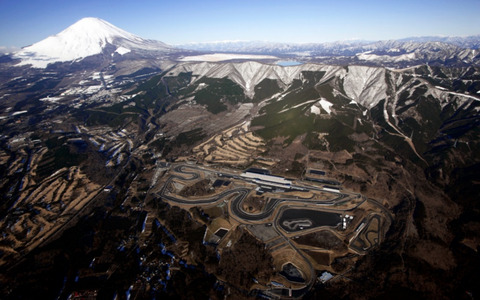
Despite being as far removed from the Deep South as it could possibly be, the plans had serious intent, with the formation of the Japan NASCAR Corporation in 1963. An exclusive contract to host the stock cars in the Far East was also secured.
By June 1964, a 1.5 million square metre site had been identified and bought, with construction beginning almost immediately. The design took its inspiration from the Daytona Speedway and was to feature two long straights connected by banked corners. The first of these banked corners was well under way when a visiting Stirling Moss, invited by the Japanese to view progress, told circuit bosses that he thought it was unrealistic to complete an oval circuit in such mountainous terrain and had some reservations about the design to date.

History doesn't record whether this was a decisive intervention; with construction costs mounting, there wasn't enough money to complete the second banking even if they had been determined to do so. Plans were revised and the circuit completed as a road course, overlooked by a giant grandstand on the long main straight. The change in plans forced an abandonment of the NASCAR contract, although the Speedway name remained. In October 1965, the Mitsubishi company acquired a controlling interest in the project.
Despite now being a more conventional road course, the original Fuji was still fearsomely fast. The almost mile-long straight lead onto the banking in a clockwise direction. Unusually, the cars rose over the crest of a hill before dropping down into the banked right hand corner. Only a layer of armco barrier at the top prevented complete disaster – and often didn't.
The circuit opened in December 1965, though racing did not get under way until the following year. Among the first international stars to sample the course was Jim Clark, who was flown in to take part in a Formula Three race. The American connections remained, despite the loss of NASCAR, in the shape of the USAC Indycars, which held the Fuji 200 exhibition race in October 1966. Jackie Stewart took victory ahead of Bobby Unser. Can-Am also visited in 1968, choosing to run the course in an anti-clockwise direction, possibly to alleviate the dangers of the high-speed entry onto the banking.

Unlike many other international top-level tracks Fuji has always encouraged the sport of drifting, allowing the D1 series to run one or two rounds there each season. Furthermore Fuji Speedway also offers a small separate drift track inside its grounds as well as a smaller "Short track" which is used for track day events and driving courses.
As well as national-championship events, Fuji also hosts the popular Nismo Festival and Toyota Motorsport Festival and the circuit is available for enthusiasts to lap when no racing or testing events are being held.
0 notes
Text
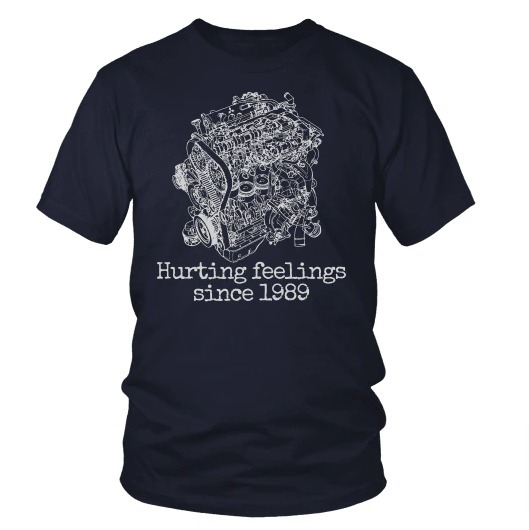
Make your style with the engine blueprint shirt, available for purchase online. This unique shirt showcases the intricate design of a classic engine blueprint, blending the worlds of engineering and fashion. With its sharp lines, detailed schematics, and a cool, industrial vibe, this shirt is perfect for gearheads, engineers, or anyone with an appreciation for precision and innovation. We offer both comfort and a unique, eye-catching aesthetic. Get ready to make a statement and showcase your passion by buying the Engine Blueprint Shirt online today. Shop now to add a touch of automotive flair to your attire with just a few clicks! Shop now at www.toolanddyedesigns.com
0 notes
Text
#m3 ugly christmas sweater#porsche ugly christmas sweater#track outline shirt#Bmw Christmas Sweater#LS3 Engine Shirt
0 notes
Text
Coilover suspension: what is it and what are the benefits?
Coilover suspension: what is it and what are the benefits?
Track racing is all about maximizing performance and speed, and having a properly set up suspension system can make a significant difference in achieving those goals. One of the most popular suspension setups for track racing is the coilover suspension system. In this blog post, we’ll discuss what a coilover suspension is, the benefits of using one for track racing, and how to properly set it up for optimal performance.
What is a coilover suspension?
A coilover suspension is a type of suspension system that combines a coil spring and a shock absorber into one unit. The term “coilover” is derived from the words “coil spring” and “over shock”. The spring sits on top of the shock absorber and is held in place by a threaded collar, which allows for adjustable ride height.
Benefits of using a coilover suspension for track racing
One of the main benefits of using a coilover suspension for track racing is its adjustability. The threaded collar on the shock absorber allows for fine-tuning of the suspension to suit the specific needs of the track and the driver. This adjustability allows for changes in ride height, compression and rebound damping, and spring rates.
Another benefit of using a coilover suspension is its weight savings. Coilovers are typically lighter than traditional shock and spring setups because they eliminate the need for separate springs and shocks. This weight savings can improve the car’s handling and reduce unsprung weight, which in turn improves acceleration, braking, and cornering.
Setting up a coilover suspension for track racing
Properly setting up a coilover suspension for track racing can be a complex process, but following these steps can help ensure optimal performance:
Determine your goals: Before making any adjustments to your coilover suspension, it’s important to determine your goals for track racing. Are you looking to improve lap times, reduce understeer or oversteer, or improve overall handling? Understanding your goals will help you make informed adjustments to the suspension.
2. Adjust ride height: Adjusting ride height is the first step in setting up a coilover suspension. Lowering the car’s center of gravity can improve handling, but it’s important not to lower the car too much, as it can result in ground clearance issues.
3. Adjust dampening: Compression and rebound dampening are two settings that can be adjusted on a coilover suspension. Compression damping controls the rate at which the suspension compresses, while rebound damping controls the rate at which the suspension rebounds. Adjusting these settings can help improve handling and reduce body roll.
4. Adjust spring rates: Spring rates determine how stiff the suspension is. Stiffer springs can improve handling and reduce body roll, but they can also result in a harsh ride. Softer springs can provide a more comfortable ride, but can also result in increased body roll.
5. Test and adjust: After making adjustments to your coilover suspension, it’s important to test the car on the track and make any necessary adjustments. It may take several iterations of adjusting and testing before you achieve the desired performance.
Conclusion
Coilover suspensions are a popular choice for track racers because of their adjustability and weight savings. Setting up a coilover suspension for track racing can be a complex process, but following the steps outlined in this blog post can help ensure optimal performance. Remember to take your time, test and adjust, and always prioritize safety on the track.
What are some of the best brands?
KW Suspension: KW Suspension is a well-respected suspension brand that offers a wide range of coilover kits for various makes and models. Their products are known for their high-quality construction and excellent adjustability.
2. Bilstein: Bilstein is another popular brand in the suspension world, known for their high-performance shock absorbers and coilover kits. They offer a range of kits for various applications, including track racing.
3. HKS: HKS is a Japanese company that has been producing high-performance automotive parts since the 1970s. They offer a range of coilover kits for various makes and models, including some specifically designed for track use.
4. Ohlins: Ohlins is a Swedish company that produces some of the highest quality suspension components in the world. They offer a range of coilover kits for track racing, with their products being used by some of the top race teams in various motorsports.
5. Tein: Tein is a Japanese company that produces high-performance suspension components for a range of applications, including track racing. Their coilover kits are known for their adjustability and durability.
It’s important to note that the best coilover for track racing will vary depending on the specific make and model of your car, as well as your specific goals and needs. It’s always best to do thorough research and consult with a professional to determine which coilover kit is best for your application.
0 notes
Text
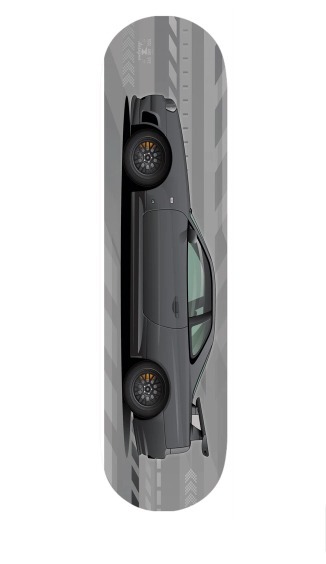
Want to buy 911 Skateboard online? Get ready with Tool and Dye Designs to shred the streets with the 911 Skateboard high-performance, sleek, and stylish deck designed for riders of all skill levels. Whether you're a seasoned pro or just starting out, this skateboard offers superior durability, and a smooth ride, making it the perfect choice for your skateboarding adventure. This cutting-edge board combines top-notch performance, precision engineering, and a sleek design for riders who demand the best. Get ready to roll in style and push your skateboarding limits with us. Get more details at www.toolanddyedesigns.com.
1 note
·
View note
Text
0 notes
Text
0 notes
Text

Are you looking to buy a track outline shirt online? Choose from the best truck outline shirt collection in our store. Its design typically includes an outline or graphic representation of a racetrack or running track, conveying a sense of movement and fitness. These shirts are popular among runners and fitness enthusiasts, providing both comfort and motivation for an active lifestyle. This shirt combines athletic aesthetics with everyday fashion, making it a versatile addition to your wardrobe. With a graphic representation of a track or running path, making it a popular choice for both sports enthusiasts and casual wear. Shop now at www.toolanddyedesigns.com
#m3 ugly christmas sweater#porsche ugly christmas sweater#Track Outline Shirt#M3 Ugly Christmas Sweater#Porsche Ugly Christmas Sweater#Engine Blueprint Shirt
0 notes
Text
0 notes